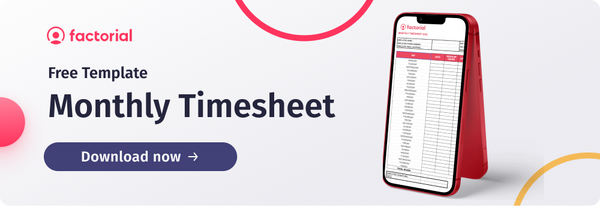Time management is the process of planning your tasks effectively within the time you have. It’s about coordinating your activities to maximise output and is a skill that can result in greater productivity, performance, and work-life balance.
Time Management in HR
If a company were a circus, HR would be the plate spinners. Their responsibilities span recruitment, onboarding, training, payroll, and more. The workload can be heavy, so the ability to multitask is essential, but even for seasoned HR professionals, keeping all the plates in the air can be difficult. That’s before factoring in additional tasks related to business strategy and unexpected fire-fighting.
As good as you might be at your job, you can’t just pluck hours out of thin air. But you don’t necessarily need to. You might just need to reevaluate how you’re spending the time you do have and how you could use it differently – in other words, practising time management. Doing so saves time and can result in a manageable workload, lower stress levels, and more robust performance.
This article will cover the benefits and challenges of this within HR. We’ll dive deeper into HR time management tips for increasing productivity, some key strategies that can help to understand how to improve work-life balance for HR professionals, and how time management software can support this goal.
Benefits of Effective Time Management for HR Professionals
- Reduced stress and burnout. Research carried out by Westfield Health has revealed that almost half (46%) of workers in the UK are nearing burnout, citing workload as one the most impactful factors. That’s one stressed-out nation. If you’re someone whose stomach lurches at the thought of your pending tasks, learning time management skills can help to compartmentalise these and break down your towering to-do list into achievable chunks.
- Improved work-life balance. Balancing the personal and professional can take constant adjustment. Being more productive during working hours can help save time and level the scale, meaning you’re more likely to avoid overtime. You’ll be able to recover precious hours from spending with family and friends or dedicating to hobbies – even if that hobby is Netflix. In this case, it’s about quantity and quality; being on top of your workload will also give you the peace of mind to enjoy your free time.

- Enhanced communication. Applying time management solutions for HR team collaboration is crucial. A team that manages their collective time efficiently can be more fluid in their approach to workload. They can find schedule gaps to support each other and delegate work.
- Higher standard of output. There’s nothing more detrimental to a project than a pressured timeline. Being rushed can kill productivity and lead to overlooked details and reduced quality. The opposite is also true; carving out more time for complex tasks can improve accuracy and allow creativity to flourish.
- Better decision-making. Giving yourself more time to weigh the pros and cons can push you toward more logical, strategic decisions. Again, the increased pressure can impact the quality of decisions.
- Increased productivity and profit. According to TotalJobs, the UK is in a ‘productivity crisis.’ Unproductive employees cost British businesses a massive £143 billion each year. Employees managing their time effectively can positively impact both the individuals and the company’s bottom line. Time is money, after all. But it’s a common misconception that working faster or longer means being more productive. Being productive comes from understanding how to organise your time best to improve focus and output. It’s about making the most out of each hour in the day rather than working for more of them!
Challenges of Time Management for HR Professionals
It’s all good and well researching HR time management tips for increasing productivity, but implementing them is easier said than done. HR professionals are constantly coming up against obstacles that threaten efficiency, such as:
- Interruptions and distractions. It’s no secret that the UK loves a cuppa, but the nation’s caffeine habit is sidetracking staff. A Totaljobs study revealed that tea and coffee breaks are the primary source of distraction for Brits in the workplace (13%). This is closely followed by colleagues chatting (11%), boredom (10%), and excessive meetings and emails (8% each). That’s a lot for even the most laser-focused HR professional.
- Juggling tasks. The responsibilities of HR teams span from employee management and compliance to recruitment and payroll – and that’s just the tip of the iceberg. This often means managing competing priorities and deadlines, which can be a difficult balance to strike!
- Uncertainty. HR is all about people, which can make the day-to-day unpredictable. This ‘fire-fighting’ can take up a lot of unexpected time, making it hard to plan work schedules. Circumstances can change at the drop of a hat, and HR needs to adapt to this!
- Procrastination. Research by Fleximize has shown that a whopping 84% of workers procrastinate for over 30 minutes a day. That’s 9 million hours of work lost to inefficiency, which could result from many things, including disengagement or stress. Whatever the cause, it can make achieving tasks a lot more complicated.
- Work-life balance. The boundary between personal and professional isn’t always easy to maintain. Life can quickly get in the way of your work when the boundaries blur, especially now that remote work is the norm.
Time Management Skills and Strategies in HR
Overcoming these challenges is no small feat. You need to invest hours in time and workload management to save time in the long run.
Goal setting
Targets are part and parcel of professional life, so understanding how best to achieve them is critical. Some proven time management methods for HR goal setting include:
- Culling your goals. Doing so is essential to avoid ‘goal competition.’ This is when the main impediments to your goals are your other goals. Working towards too many at once can mean spreading yourself too thin, leading to goal cannibalisation. Ultimately, you’ll complete less or none to optimum quality. Trim down your list to give each objective the time it deserves.
- Habit stacking. Weaving your goals into everyday routines can help you achieve them, especially if your day is chock-a-block. For example, brainstorm for your strategy meeting while making coffee, or listen to a training podcast while organising your calendar.
- Set limits. Teams and managers often set minimum KPIs to hit for each goal, but it can be overwhelming when the sky’s the limit. Outlining maximum targets when goal setting can help to keep them realistic and feel more achievable to the people working towards them.
Prioritisation
Workload management and prioritisation go hand in hand. Most people will have a list of outstanding tasks, which can be broken down into categories to understand how to tackle each one most efficiently. You should plan and organise to-do lists before working on each task. This is vital to understanding how to balance workload and time management in HR.
- Categorisation. Lump your tasks into overarching sections that correlate to your primary responsibilities, for example, ‘campaign set-up,’ ‘analytics,’ ‘admin,’ etc. Compartmentalising can make your list more digestible and less daunting!
- Prioritisation. Not all of your tasks will have the same level of importance, so tackling them in a random order doesn’t make sense. You can either:Prioritise by urgency. This means focusing on tasks with a closer deadline. Many jobs demand immediacy for HR professionals, whether finishing an offboarding before an employee leaves or dealing with a managerial grievance. Ranking them on a timeline can ensure you stay calm and measured. Assessing the impact of not completing each one on time can help you to do so. Kate Buckley, CEO and founder of Buckley Media, suggests a five-step approach: “First, review the list. Is everything on it mission-critical? Second, triage. Can you outsource or delegate work? What needs to be done today versus next quarter? Third, clear your head. Go for a walk, meditate, do a crossword, or something else. Let your subconscious do the heavy lifting (trust me on this). Fourth, revisit the triaged list with fresh eyes and assign weighted priorities. Fifth, execute.”Prioritise by business impact. HR professionals receive requests from every department within an organisation, and they’ll each be biased about which is most critical – often their own. The safest way is to forecast the results and manage your time based on data. You can then dedicate working hours to each request depending on the level of impact. This can work the other way around, too. Ask yourself, what will the consequences be on myself and the business if I don’t finish this? The higher the impact, the more urgent the task.
- Identify workload capacity, limitations, and imbalances. Knowing how to balance workload and time management in HR can be a challenge. Identify workload capacity, restrictions, and inequalities. By categorising and prioritising, you can assess whether your workload is too small or large. This will allow you to reallocate accordingly and even out imbalances across your team.
If you’re more of a visual person, The Eisenhower Matrix (or Time Management Matrix) is a valuable project management tool to support you here. It’s essentially a framework that provides structure to your prioritisation. According to Acuity Training, it’s the most successful time management technique, with 100% of people using this grid feeling that their work is under control, either 4 or 5 days per week.
Time blocking and scheduling
Often, you’re met with an onslaught of notifications from the moment you open your laptop in the morning. Something constantly threatens to interrupt your schedule, whether it’s Slack pop-ups, incoming emails, or calendar reminders.
Time blocking and calendar management can minimise these distractions by creating more structure to your day. Signalling these periods in your calendar also means others will know when to avoid approaching you with ad-hoc tasks.
Start by assessing your pattern of work across a typical day. Ask yourself, when does my productivity peak? When do I do my most procrastination? Understanding exactly when you do your best will help build your calendar blocks. For example, your most intense focus time should be scheduled for your most efficient time of day. In the same way, plan a coffee break with your teammates when you expect yourself to slow down.
Once you’ve done this, you can assign time blocks to these categories for ultimate time optimisation:
- Deep focus. This is your time to get stuck into one project. Give yourself a 2-3 hour block and set your status as ‘unavailable’ and ‘do not disturb.’ Make your team aware of these times, so they know to leave you to it! Try to plan meetings around these to protect this space.
- Power-hour. Use a ‘power hour’ once or twice a week to complete a bunch in one go. Lots of your tasks might only take 5-10 minutes to complete but can build up over the week and overshadow your main aims.
- Forward planning. Managing your time takes time. Carve out space for future planning. These blocks could be spent categorising your to-do list, brainstorming ways to be more efficient, or planning your schedule.
- Inbox wrestling. Resist the urge to peek at your inbox throughout the day, as this can hamper your productivity when doing other tasks! Set aside a couple of 30-minute blocks each day to respond to emails.
- Microbreaks. This could be a one-minute break for every 40 minutes of work you carry out. Try to mentally and physically switch gears during this block. Look away from your screen, stretch your legs, and get some air! Studies have shown that these types of mini-breaks improve productivity and concentration. Also, musculoskeletal disorders from desk work accounted for 27% of all work-related ill health in 2021/22, something that regular movement can help avoid.
If time blocking is new to you, try using workload planning and management apps like Sunsama or HourStack to get you started.
Schedule flexibility
Any HR professional will be painfully aware of how quickly priorities and circumstances can change at work. There needs to be some wiggle room in your calendar to allow you to adapt to ever-changing business demands.
Picture this. You’ve built time blocks into your calendar, and you’re in the middle of deep focus time when an urgent and unexpected issue comes up. Putting that on hold for your timeline isn’t going to go down well.
Time blocking is only effective when it accounts for unpredictability. Best practices for HR schedule flexibility and time management include blocking out a ‘mop-up’ hour or two on a Friday afternoon to finish anything that got deprioritised. If you schedule flexibly, these issues will impact your workload less.
Task delegation and responsibility sharing
Managers need to understand effective delegation techniques for HR time management to avoid being overworked and doing overtime.
Managerial responsibilities can make involvement in the day-to-day action much harder. Working on overarching strategic projects and overseeing your team can take up most of your bandwidth, leaving little time for tasks. This is where task delegation comes in. Don’t be afraid to lean on your team and spread the workload.

Successful time management within HR requires you to employ effective delegation techniques, such as an ‘input ranking’ system. This is another method of task categorisation that involves splitting them into three groups: tasks you need to carry out yourself, that you can work alongside others, and that you can wholly pass on to someone else.
Setting boundaries is a prerequisite to task delegation. Remember – you don’t have to take on everything yourself! Your team is there to support you, and you should be able to trust their abilities to take on jobs you don’t have the capacity for.
Managing email and communication
UK workers spend a massive 30 days a year on average sending emails. That’s an entire month per year spent grappling with your inbox! So it wouldn’t be right to talk about time optimisation without outlining how to implement email processes for optimal productivity. A few best practices for HR professionals include:
- Create an inbox filing system making use of sub-folders. Title these with the key responsibilities relating to your role so that any incoming emails can be labelled accordingly. Tidy inbox, tidy mind!
- Build a response process. Create a ‘pending’ folder where you can send emails requiring an action or response – you can return to this during your ‘inbox wrestling’ time block. You can also create a ‘reference’ folder for anything that doesn’t need a reply but is helpful to save. Your inbox should then only contain messages that require an immediate response.
- Make use of inbox rules. If your company uses third-party software for specific processes, such as project management or invoicing, you likely receive countless notification emails throughout the day that can clog up your inbox. Set rules so that emails from these platforms are sent into a contained folder.

Task automation
It’s pretty mad to think that employees and managers in the UK waste over 40 working days a year on admin tasks [Insert pitch deck graph – tag Opinium Research]. But HR tools for automating time-consuming tasks can massively reduce this by simplifying and streamlining the work of People Teams. HRIS automates the manual tasks that HR can become easily bogged down in, including document management, payroll, and recruitment. Therefore, task automation means HR professionals can spend less time on these time-consuming jobs and more time on strategic business priorities – as they should!
Strategies for Effective Meeting Management
When managed well, meetings can save time for teams by clarifying project aims and actions and keeping all stakeholders aligned. Yet a recent study by CV-Library revealed that 75.9% of Brits think virtual work meetings are a ‘waste of time.’ One in three (34.4%) even admitted leaving meetings early out of boredom.
Meetings are perceived as sessions to endure rather than valuable opportunities for collaboration. Meeting hosts must apply effective time management techniques for HR meetings to boost employee engagement and increase productivity. Try these time optimisation strategies for your next team call.
1. Set clear objectives and agendas
In the words of entrepreneur Neil Patel, “no purpose, no meeting.” Outline what you’re hoping to achieve; do you want to come away with a list of new ideas, make a finite decision about something, or just update each other on a project’s status? Whichever it is, include it on the meeting invite so everyone can prepare. Reflect on whether you’ve achieved your goal in the last few minutes and make a plan based on this.
2. Encourage active participation and employee engagement
One way to do this is by sharing materials beforehand so attendees can formulate ideas, opinions, and questions. You could also delegate roles ahead of the meeting. Giving people responsibilities means they’re less likely to switch off as their input is directly related to the meeting’s success! You’ll therefore be able to achieve goals quicker.

3. Create a schedule and stick to it
Form an agenda for time optimisation and give each segment a time slot. Check this regularly throughout to avoid squeezing the last few points on the schedule. Give enough time for discussion and debate but only a little to prevent people from taking tangents and losing focus.
4. Evaluate outcomes and follow up
Detail the action points and email them to attendees afterward. If you use a shared platform, record them here. Set reminders to follow up on these or book a short follow-up meeting. You can also ask for feedback on your meeting management – constructive criticism could make them even more productive in the future!
5. Meet outside the office
It can be tough to stay engaged when you’ve been staring at a computer all day. You won’t get the most out of people and your meeting if everyone on the call has square eyes from screen time! A dose of nature and some fresh air can wake people up and inspire new ideas.
Matt Jarvis, CEO of the advertising/creative agency 72andSunny, is a big advocate for this as he believes that productivity depends on creativity. He says, “Creativity and innovation benefit from surprising leaps or lateral thoughts. One of the things that happens when you go outside and walk around, you start to collide with your environment a little bit, and it’s a great source of inspiration. I think you’re much more creative and expansive out and about than you are staring at a screen.”
6. Cull your attendees
Be ruthless with your invite list. If you’re unsure about someone, mark them as ‘optional’ so they can decide whether they’d bring value. Removing just two people from a meeting that will last an hour frees up two hours for them to spend on other tasks. It feeds into the time management ecosystem of the entire company. Not only this, but fewer people simply means quicker decisions. Take a leaf from Jeff Bezos’ book and use the ‘Two Pizza Rule.’ Essentially, the number of people at a meeting should always be able to be fed by two pizzas.
7. Don’t multitask, and encourage others not to either
A Microsoft study found that 30% of employees sent emails during meetings and that people multitask ‘more frequently in larger and longer meetings.’ When attendees do other tasks in the background, you’re competing for their attention and won’t get the most out of the time.
Time Management Training for HR Professionals
Upskilling HR professionals with time management training can benefit your organisation significantly. HR is involved in projects with most departments across a business; if they are well-versed in time optimisation and time-saving strategies, the whole company will reap the rewards!

There are a few ways you could approach this. Online training sessions may be the way forward if your teams do remote work. These can be taken at the pace of each individual so that business priorities aren’t compromised.
Physical time management lessons led by experts are another option, as are personal coaching sessions tailored to each individual. This last option is likely the most costly but is the best way to pinpoint personal blockers to time management and overcome these. You can find a wide range of training options here.
There are a few ways you can ensure training is delivered effectively:
- Ask employees for recommendations to boost engagement with the chosen programme.
- Offer the training within working hours.
- Make objectives clear and set measurable goals.
- Account for varying skill levels.
- Communicate and signpost it.
Using HR Software for Time Management
Time attendance management software can be a lifesaver for HR teams. A digital solution offers a way to manage and track employee attendance, scheduling, and time off requests from one place. The most common features include the following:
Time tracking
Employee time tracking software for HR is the most accurate and effective way to track employees’ working hours. Employees can check in and out at the click of a button to record their working hours and breaks. This automatically generates timesheets for managers to approve or reject once they’ve compared estimated hours worked vs. actual hours worked. You can also create productivity reports using this data to plan workload more efficiently and boost your company’s bottom line.
Having accurate timesheets has a direct impact on payroll, too. Managers can add multiple timesheets to record time data and use them for precise client billing, payroll processing, estimation, and management accounting.
Time tracking can lead to the following:
- Increased visibility. Time tracking software provides you with a bird’s eye view of all time data of individuals across all projects without jumping through projects. This also extends to agency staff or contractors/freelancers; temporary employee hours can be tracked and monitored from the same place.
- Stay compliant with Working Time Regulations. The following legislation means you can avoid hefty penalties, an unhappy workforce, and dents to your business reputation.
- Enforce breaks. Breaks are massively beneficial to physical and mental wellbeing, so this can only improve employee morale and job satisfaction, too! Managers can visualise when breaks haven’t been taken and can encourage employees to do so. This is especially important for teams that remote work, with less visibility.
- Increase profit. You can use time tracking data to plan workload accurately. Time track per project, so you better know how long to factor in each task. Maybe you’ll realise some things aren’t worth the resource spent, and vice versa! You’ll be able to determine output vs. time spent and adjust strategy in light of this.
- Improve productivity. Employees can see how long each task takes, meaning they can plan their weeks more logically. Timesheets can also inform your goal-setting; you can give your team members clear deadlines and timelines by setting time estimates for different important tasks.
- Increase the accuracy of data. It’s easy to misrecord when you’re manually inputting timings into spreadsheets. You massively reduce the risk of human error through digitisation.
Time off management
Annual leave allowance is finite (in most cases), and so every day off work is precious. Time off gives people that crucial chance to switch off and recharge their batteries to avoid burnout. Yet less than 40% of UK adults took all of their annual leave allowance last year, with many of them blaming pressure from management.
One way around this? HR scheduling solutions for managing employee time off. A digitised time-off management process means employees avoid awkward conversations with their bosses and can instead submit holiday requests at the click of a button. Managers can then approve or reject these in line with employee schedules and anticipated workload within seconds. It’s a win-win.
Managers can also create a time off policy directly within an HR platform so that staff can always access it. This includes creating blocked periods so employees can’t request days off during busy times and reducing the time managers need to spend rejecting requests they can’t accommodate. Managers can also set the amount of paid time off that carries over from one year to the next.
Automating your time off management processes can have significant benefits, including:
- Reducing absenteeism. HR solutions record attendance and offer a simple, efficient way to calculate absence rates within a business. You can drill down further here and view the incident rate, highlighting the inactivity and severity of every absence. This data can be used to build absence reports (amongst other custom reports) and identify problem areas to work on. You can also implement holiday policies for the whole business or different teams, so that time off isn’t misused.
- Decreasing costs. Being able to monitor attendance and adapt to absences efficiently can increase productivity and therefore reduce two different types of expenses:
- Direct costs: Unnoticed absences and poor time off management can result in employers paying salaries for unpaid time. This can also lead to additional expenses like managing paid time off, paying overtime, and paying for absence cover. Employees can lose out, too, if they’re not compensated correctly for paid time off.
- Indirect costs: These are harder to measure but can massively impact a business. Time off mismanagement can result in lost productivity which can damage profits. It can also cause delays in work, missed deadlines, and lagging projects.
- Greater visibility. HR scheduling solutions for managing employee time off allow managers to visualise annual leave days accrued, used, and remaining. Using a calendar view, employers can quickly review upcoming employee absences and differentiate between sick leave, holiday days, and other types of leave at a glance. This makes tracking holidays and ensuring each team is adequately staffed a hell of a lot easier.
These tools streamline time off management for employees and managers, which is key to building a happy, motivated, and productive workforce.
Shift Management
Shift management and headaches go hand in hand. Rota managers have a hard enough job before factoring in time off, last-minute absences, clashes, and different staff locations.
So it’s no wonder employers nationwide aren’t getting it right. Research carried out by The Living Wage Foundation revealed that nearly two-fifths of UK workers are given short notice of their working hours. This can impact employees’ work-life balance, induce stress and decrease motivation to perform well at work. So it’s no wonder employers nationwide aren’t getting it right.
Time management software can automate and streamline shift scheduling, giving everyone more clarity. Rota managers can plan in a one-month calendar view and even choose between most used shift templates to speed up planning. This increased visibility also helps to eliminate scheduling conflicts and ensure that staff are well-rested, boosting employee morale and reducing the risk of burnout.
With real-time updates and notifications of shift change requests and cancellations, managers can quickly make changes to the schedule as needed, ensuring that their business runs smoothly. Notifications of shift changes can also be sent instantly, giving staff plenty of notice.
Strategies for Time Optimisation and Reducing Overtime
According to Statista, men in the UK work an average of 4 hours of paid overtime per week, while women work 2.8 extra hours. Spikes in overtime could be a tell-tale sign of poor time management within a company and represent an opportunity to optimise productivity. Managers should identify the causes of overtime within their team and implement HR time optimisation strategies for reducing overtime tailored to the root issues. Here are a few common problems and solutions:
- Low productivity. Engagement and motivation measures may be needed. Could you incentivise employees with benefits and prizes for productivity and goals hit?
- Incorrectly sized workforce. Ask yourself, are there enough employees to complete important tasks within working hours? Could you create new roles to support the team?
- Mismanagement. Attention should be paid to workload management and sharing the right tasks evenly across teams, i.e. how you delegate work.
- Mismeasurement of employee output. Managers need an accurate way of measuring productivity, not simply time spent online or in the office. Consider attaching units to each task that represent the estimated time taken. Introducing time tracking measurements like this can increase the visibility and accuracy of project timelines, in turn limiting overtime.
Time Management and HR
HR professionals must develop and master the skill of time management. It can save time and help with task prioritisation, productivity, and performance.
But as much as it’s about efficiency and productivity, it’s also about maintaining a healthy work-life balance and avoiding burnout. Spending your working hours more efficiently will leave more time and mental space for your personal life and for maintaining your wellbeing. It takes a lot of self-reflection and organisation but the rewards are worth the effort.





